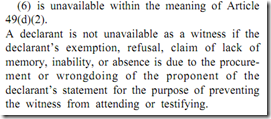Empirical Fallacies of Evidence Law: A Critical Look at the Admission of Prior Sex Crimes
Aviva Orenstein
Indiana University Mauer School of Law
Tamara Rice Lave
University of Miami, School of Law
September 7, 2012
Indiana Legal Studies Research Paper No. 209
University of Cincinnati Law Review, Forthcoming
Abstract:
In a significant break with traditional evidence rules and policies, Federal Rules of Evidence 413-414 allow jurors to use the accused’s prior sexual misconduct as evidence of character and propensity to commit the sex crime charged. As reflected in their legislative history, these propensity rules rest on the assumption that sexual predators represent a small number of highly deviant and recidivistic offenders. This view of who commits sex crimes justified the passage of the sex-crime propensity rules and continues to influence their continuing adoption among the states and the way courts assess such evidence under Rule 403. In depending on this image of sex crime perpetrators, legislators and judges have ignored the contrary psychological and criminological evidence. Most critiques of the sex-propensity Rules concentrate on the unfairness part of the Rule 403 equation, but we approach them in a novel way, focusing instead on the absence of empirical support for their so-called probative value. This article examines the empirical support for the probative value of such evidence, revealing that current policy rests on bogus psychology and false empirical assertions. Rules 413-414 typify the regrettable seat-of-the-pants psychologizing on which evidence rule drafters rely too often; the approach eschews a nuanced approach to questions of recidivism and the different types of sex offenders. We argue that rulemakers should look to the disciplines engaged in the empirical study of perpetrator behavior before asserting notions of deviance and recidivism to justify radical changes to evidence law. Finally, we offer specific guidance to judges about how to conceptualize the probative value of evidence of prior sexual misconduct and how to incorporate this knowledge in applying their discretion in admitting sex-crime propensity evidence.
 Court-Martial Trial Practice Blog
Court-Martial Trial Practice Blog











